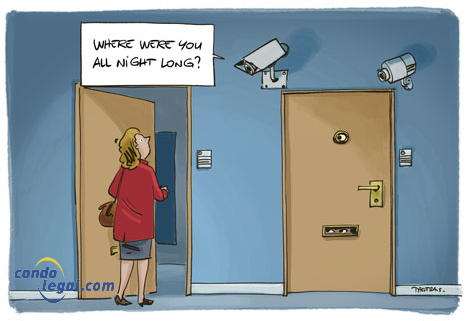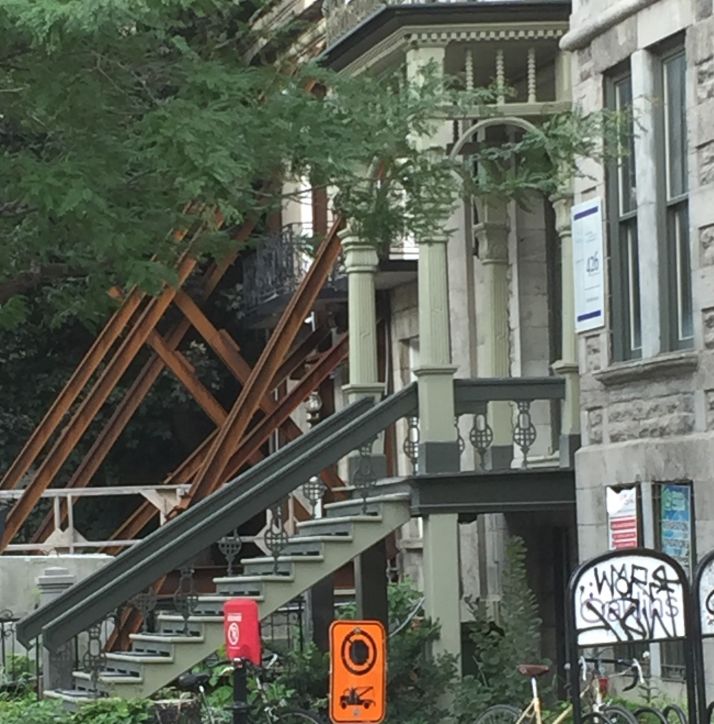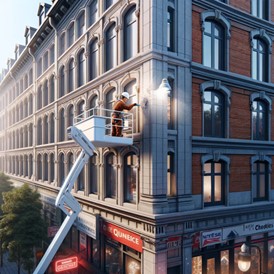 The facades of an immovable not only ensure its sealing, they also have their own identity; in addition to regulating climate conditions and improving the comfort of the occupants, they are vectors of style and therefore, should work be undertaken to repair or replace them, it is essential to ensure their structural, architectural and heritage integrity and so, whether it concerns a stand alone immovable, a co-ownership by phases or townhouses.
The facades of an immovable not only ensure its sealing, they also have their own identity; in addition to regulating climate conditions and improving the comfort of the occupants, they are vectors of style and therefore, should work be undertaken to repair or replace them, it is essential to ensure their structural, architectural and heritage integrity and so, whether it concerns a stand alone immovable, a co-ownership by phases or townhouses.
Furthermore, some facades are subject to the Building Chapter of the Safety Code adopted in 2013 by the Quebec building Board (Régie du bâtiment du Québec) (RBQ); they must be inspected at fixed intervals and, if necessary, corrective work must be carried out to keep them safe.
Legal status
The legal status of the facades may differ from one co-ownership (condominium) to another depending on what is specified in the declaration of co-ownership (constituting act of the co-ownership); a distinction must be made between facades that can be qualified as private portions and those that could be qualified as common portions.
Private portions
Unlike a vertical co-ownership, the facades of a building located in a horizontal co-ownership are generally not common portions and therefore, there will be no contingency fund to replace the masonry or the windows at the end of their useful life; retrofitting work shall be incurred at the expense of the owner of the concerned residential (housing) unit.
Generally, a declaration of co-ownership requires co-owners to ensure the maintenance of their private portion because if this is not done, the syndicate of co-owners may carry out this work at the expense of the concerned co-owner; this is based on the legal obligation mentioned at section 1039 of the Civil Code of Québec which requires the syndicate to ensure the preservation of the immovable and to purchase an insurance that will adequately cover him.
Usually, the declaration of co-ownership contains provisions to preserve the overall harmony of the facades and these provisions are based on the creation of a servitude that obliges the co-owners as well as the syndicates to maintain the architectural harmony and uniformity of the various buildings of the co-ownership; the declaration of co-ownership may also impose this obligation on co-owners and syndicates by the means of a stipulation inserted in the destination of the immovable. Thus, should the facades require work, it must be carried out in accordance with the architectural uniformity of the building; for example, red bricks can't be replaced by bricks of a different colour.
Common portions
Section 1044 of the Civil Code of Québec stipulates that "the foundation and main walls of buildings" are presumed to be common portions of the co-ownership and so, the elements that make up a facade are sometimes considered to be an integral part of the foundation and main walls of the building; for example, it could be a solid masonry facade that supports the floors. In the case of a vertical co-ownership, the facades of the building are generally common portions.
The law requires the syndicate to take all necessary measures to ensure the longevity (durability) of the common portions of the immovable; he is notably responsible for:
In principle, the syndicate has the exclusive competence to have work carried out upon the common portions; no co-owner is entitled to intervene in this matter and so, not even to restore them.
The inherent costs for the facades are financed by the common expenses (condo fees); as for maintenance, replacement, improvement or alteration costs, they are split amongst the co-owners and the amount to be paid depends on the relative value of each unit.
Building Chapter of the Safety Code
Furthermore, the Building Chapter of the Safety Code adopted in 2013 by the Quebec building Board (Régie du bâtiment du Québec) (RBQ) specifically applies to the facades of immovables with five floors above ground or more; all facades must now be inspected every five years and maintained periodically in order to ensure safety and to prevent the development of dangerous conditions. The Building Chapter of the Safety Code also requires that a register be kept in which important relevant information must appear such as a description of repairs made to the facades, modifications or maintenance carried out as well as related inspection reports; this register must be available on the premises for consultation by the Régie du bâtiment du Québec.
When an architect or an engineer detects the presence of dangerous conditions on a facade, that is to say that one of its elements threatens to detach itself or there is an imminent risk of collapse, he must immediately inform the Quebec building Board (Régie du bâtiment du Québec) (RBQ) and the concerned syndicate of co-owners; the building professional will also indicate the emergency measures put in place or will recommend those that need to be implemented without delay in order to eliminate these dangerous conditions.
In addition to these emergency measures, the owner of a facade is also required to complete a form entitled Declare a dangerous condition: facade or parking lot within 30 days of its discovery; he must also provide the Quebec building Board (Régie du bâtiment du Québec) (RBQ) for approval a description prepared by an engineer or by an architect of the corrective work to be carried out as well as a schedule of such work.
Register of co-ownership
The syndicate of an immovable subject to the Building Chapter of the Safety Code must keep a register of co-ownership throughout the life of the building which will be kept on site; this register contains:
Each facade must be examined, at the earliest, within 6 months preceding the date of production of the inspection report, the objective being that the occupants of the immovable or those who circulate in its vicinity are protected against defects that could compromise their safety or expose them to dangerous conditions.
Security warranty
Through their syndicate of co-owners, the co-owners must, without exception, guarantee that their building is not affected by any dangerous conditions; to do so, the syndicate must obtain from an architect or an engineer an inspection report certifying facade safety and the latter must contain:
 WHAT YOU SHOULD KNOW! The facades of an immovable include the walls but also the windows and their sills, the doors as well as the balconies and their railings.
WHAT YOU SHOULD KNOW! The facades of an immovable include the walls but also the windows and their sills, the doors as well as the balconies and their railings.
 WHAT TO KEEP IN MIND: Some signs of facade deterioration should be brought to the attention of the syndicate of co-owners; these signs indicate that a more thorough inspection is necessary. Cracks, rust stains, visible deterioration on balconies, displaced stones and concrete blocks and deteriorated joints on the building's exterior cladding are among the most common signs.
WHAT TO KEEP IN MIND: Some signs of facade deterioration should be brought to the attention of the syndicate of co-owners; these signs indicate that a more thorough inspection is necessary. Cracks, rust stains, visible deterioration on balconies, displaced stones and concrete blocks and deteriorated joints on the building's exterior cladding are among the most common signs.
 WARNING! A syndicate of co-owners or a professional who violates a provision of the Safety Code will be fined; the amount may be substantial.
WARNING! A syndicate of co-owners or a professional who violates a provision of the Safety Code will be fined; the amount may be substantial.







